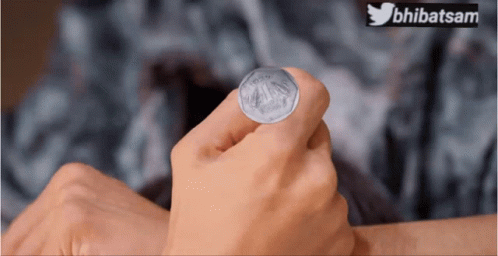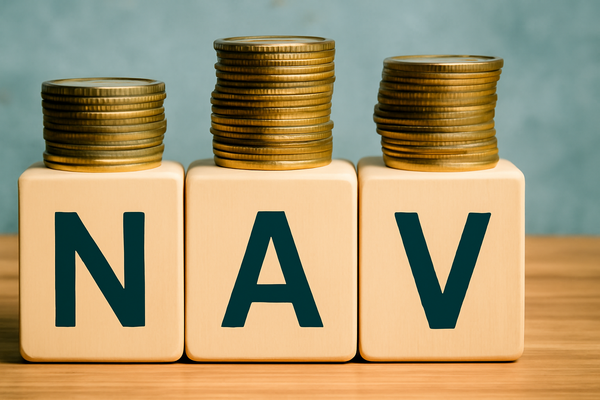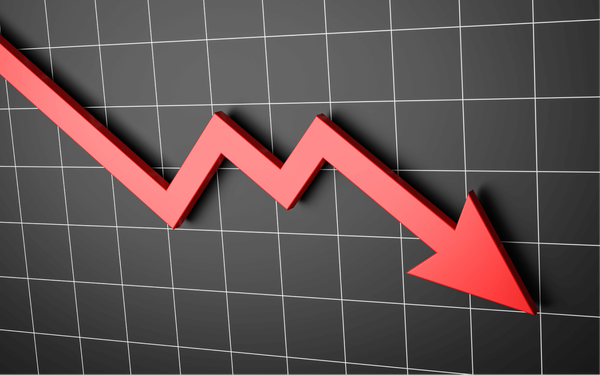The ripple effect of a falling rupee
Does the falling rupee scare off global investors or open doors for smarter ones? Uncover how rupee swings impact foreign inflows and what smart investors do next.

Currency moves don’t just affect imports and exports—they shape how the world sees India as an investment destination.
Rupee ups and downs aren’t just about exchange rates, they actually matter a lot to foreign investors looking at India. When the rupee gains or loses value, it can affect how much return they make, how expensive it is to hedge their risks, and whether they choose to invest at all. If you're new to this topic, understanding how these currency shifts impact foreign portfolio investments and capital flows is super important. Let’s break down how rupee swings can shape the decisions of global investors

What drives rupee volatility?
The rupee doesn’t move on its own, there’s a whole web of global and local factors behind every swing. For starters, when foreign investors pull money out of India, demand for the rupee drops, which adds to the volatility. Even decisions by the RBI, like an unexpected rate cut, can catch the market off guard and push the rupee higher or lower.
Big-picture trends also play a part. For example, when U.S. bond yields go up, global investors often move money out of India to chase better returns elsewhere—putting pressure on the rupee. Add in global tensions, like U.S.-China trade disputes, and risk-averse investors start pulling back from emerging markets, making currencies like the rupee more shaky.
And then there’s oil—India imports a lot of it. So when global oil prices rise, India needs more dollars to pay for it. That pushes the rupee down further. It’s all connected—and it’s why the rupee’s value can feel like a rollercoaster sometimes.
How rupee affects foreign investment?
The way the Indian rupee moves can really influence how foreign investors behave. Whether it’s someone investing in stocks or setting up a factory, currency swings play a big role.
- Portfolio Jitters
When the rupee becomes unpredictable, it adds an extra layer of risk for foreign investors. Even if they earn a solid 10% return on Indian stocks, a 6% drop in the rupee could leave them with just 4% once they convert back to their own currency. That’s a big deal—and it often makes investors more cautious. - Inflow or Outflow?
A stable rupee builds confidence. That’s when you see foreign money flowing into Indian stocks and bonds. But when volatility kicks in, investors tend to pull back. In early 2025, for instance, equity outflows spiked when the rupee came under pressure. Just a few months later, strong inflows helped boost both the rupee and investor mood. - FDI and the Long Game
Foreign Direct Investment—like building factories or setting up operations—isn’t usually shaken by short-term rupee moves. But if the rupee keeps weakening over time, it makes importing machinery more expensive, which can slowly dampen investor enthusiasm. - Hedging Isn’t Free
To protect themselves from rupee swings, many foreign investors use hedging tools. But that protection comes at a cost. For example, in June, when the rupee depreciated and forward premiums narrowed, the cost of hedging shot up—eating into returns.
Why sudden rupee shocks matter?
When the rupee swings suddenly, it’s not just about numbers on a chart—it hits investor confidence, decisions, and money movement.
- Earnings Get Hit
Even if Indian stocks are doing great, a falling rupee can eat into foreign investors’ returns when they convert their gains. So profits on paper can shrink fast in real terms. - Mood Turns Cautious
If the rupee keeps dipping, it can shake investor sentiment. That fear leads to a “risk-off” mindset—investors start pulling money out, like we saw during the bumpy phases of 2025. - Bond Investments Slow Down
As the rupee weakens, real returns from Indian bonds start to look less attractive. Even though there was strong bond demand in 2024, it slowed in 2025 because of these currency worries. - RBI’s Hands Get Tied
To stop the rupee from falling too fast, the RBI often sells U.S. dollars. But doing that too much eats into our foreign exchange reserves, leaving less room to react next time.
How RBI keeps the rupee in check?
When the rupee gets shaky, the Reserve Bank of India steps in to calm things down and keep investors from panicking. Here’s how they do it:
- Selling Dollars to Stabilise the Rupee
If the rupee starts falling too fast, RBI sells U.S. dollars to slow it down. This helps prevent wild swings and reassures both global and local investors. - Tweaking Interest Rates
In 2025, RBI cut repo rates to make borrowing cheaper and boost liquidity. This also affected the cost of currency hedging, giving investors some relief. - Strong Reserve Backing
With over US$ 686 billion in foreign exchange reserves (as of April), RBI has enough firepower to step in whenever needed—without creating panic in the markets.
Smart investor moves when the rupee gets volatile
Rupee swings can shake up returns, but smart investors know how to stay steady. Here are a few practical strategies to manage the ups and downs:
- Hedge the Near Future
Instead of trying to cover everything, focus on hedging cash flows you expect in the next 6–12 months. It’s a simple way to keep short-term currency shocks in check. - Pick Resilient Sectors
Put your money into sectors that tend to hold strong—like IT, pharma, and infrastructure. These can help cushion the blow when the rupee moves wildly. - Watch the Central Banks
Keep an eye on what RBI and the U.S. Fed are up to. Their rate moves and policy shifts often hint at which way the rupee might head next. - Try Currency Overlay Funds
Some funds blend stock investments with smart currency hedging. They can give you market growth and protection from currency risk at the same time. - Look for Carry Trade Opportunities
When interest rates shift, so do carry trade opportunities. Track the rate gaps and forward premiums—they can make or break your rupee-linked returns.
Thinking long-term
Rupee volatility might feel like a red flag—but for long-term investors, it can open up the right doors at the right time.
- Short-term dips, long-term wins
Yes, a falling rupee can dent your returns in the near term. But it also means you might be buying into strong Indian assets at a discount—setting you up for solid growth ahead. - Support from the RBI
The Reserve Bank of India has been actively stepping in to keep volatility in check. With healthy forex reserves and timely interventions, it helps keep investor confidence steady—even when the rupee wobbles. - Mix it up with currencies
You can lower your risk by investing in India through instruments linked to more stable currencies like the USD or HKD. It helps smooth out rupee swings while still letting you tap into India’s long-term growth story.
The rupee rollercoaster
Rupee ups and downs are pretty normal for a growing economy like India. In fact, a bit of currency movement is to be expected—it’s not always a cause for concern. For global investors, the smart approach is to understand these shifts, hedge where necessary, and keep an eye on what the central bank is doing.
India, now the world’s fourth-largest economy, continues to be an attractive investment destination. But to truly benefit, investors need to manage currency risk wisely - making sure their strategies match both short-term realities and long-term goals.




